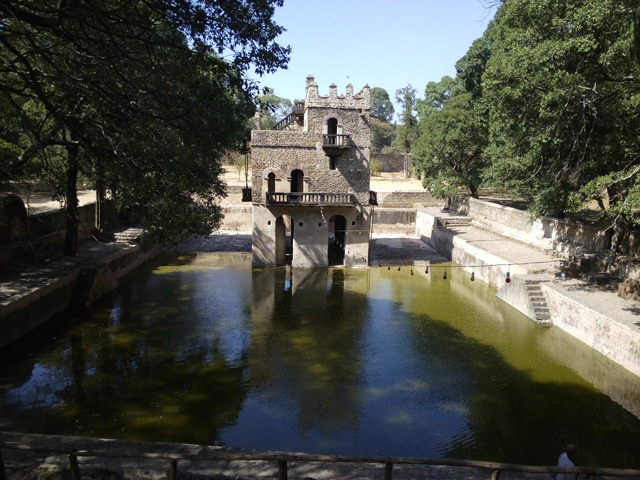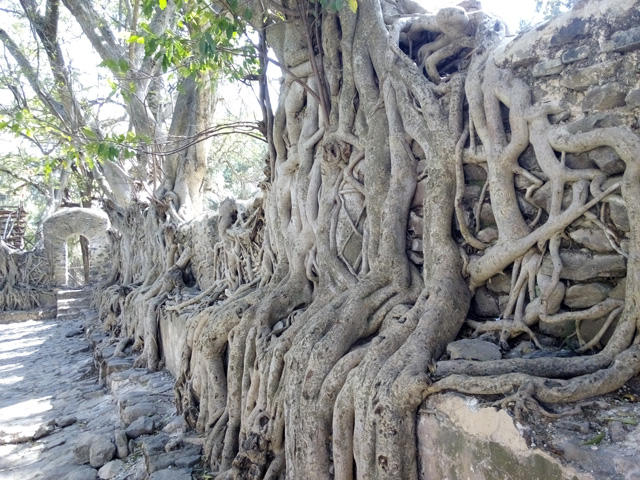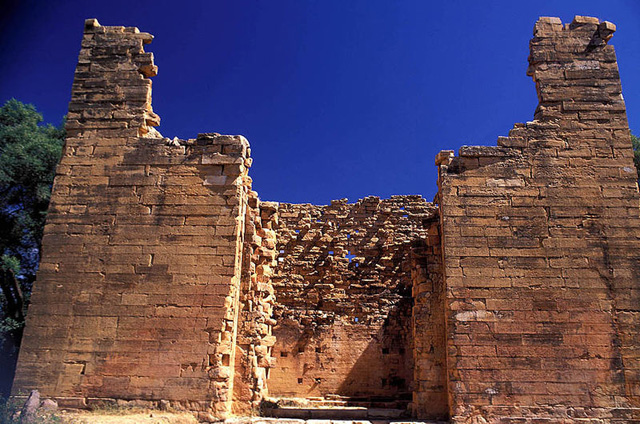Historical Attractions
Lalibela
Lalibela is a town in northern Ethiopia famous for monolithic rock-cut churches. Lalibela is one of Ethiopia’s holiest cities, second only to Aksum, and a center of pilgrimage. Unlike Aksum, the population of Lalibela is almost completely Ethiopian Orthodox Christian. Ethiopia is one of the earliest nations to adopt Christianity in the first half of the fourth century, and its historical roots date to the time of the Apostles.
The layout and names of the major buildings in Lalibela are widely accepted, especially by local clergy, to be a symbolic representation of Jerusalem.
Lalibela is known around the world for its churches carved from within the earth from “living rock,” which play an important part in the history of rock-cut architecture. Though the dating of the churches is not well established, most are thought to have been built during the reign of Lalibela, namely during the 12th and 13th centuries.
Bahir Dar and Lake Tana Monasteries
Bahir Dar is a city in north-western Ethiopia which is the capital of the Amhara Regional state. Bahir Dar is one of the leading tourist destinations in Ethiopia, with a variety of attractions in the nearby Lake Tana and Blue Nile river. The city is known for its wide avenues lined with palm trees and a variety of colorful flowers. In 2002 it was awarded the UNESCO Cities for Peace Prize for addressing the challenges of rapid urbanization.
The Blue Nile Falls (Tis Issat) are located about 30 km to the south. The Blue Nile Falls are one of the main tourist attractions of Bahir Dar, especially during the rainy season when the water level rises and the falls become greater.
Gonder
Gonder is a city located in the Semien Gondar Zone of the Amhara Region, Gondar is north of Tana Lake on the Lesser Angereb River and southwest of the Simien Mountains. Gondar previously served as the capital of both the Ethiopian Empire and the subsequent Begemder Province. The city holds the remains of several royal castles, including those in Fasil Ghebbi (the Royal Enclosure), for which Gondar has been called the “Camelot of Africa”.
Gonder Fasil Castle Ethiopia Decouvrir Ethiopie TourGondar traditionally was divided into several neighborhoods or quarters: Addis Alem, where the Muslim inhabitants dwelled; Kayla Meda, where the adherents of Beta Israel lived; Abun Bet, centered on the residence of the Abuna, or nominal head of the Ethiopian Church; and Qagn Bet, home to the nobility. Gondar is also a noted center of ecclesiastical learning of the Ethiopian Orthodox Tewahedo Church, and known for having 44 churches – for many years more than any other settlement in Ethiopia. Gondar and its surrounding countryside constitute the homeland of most Ethiopian Jews.
The modern city of Gondar is popular as a tourist destination for its many picturesque ruins in Fasil Ghebbi (the Royal Enclosure), from which the emperors once reigned. The most famous buildings in the city lie in the Royal Enclosure, which include Fasilides’ castle, Iyasu’s palace, Dawit’s Hall, a banqueting hall, stables, Empress Mentewab’s castle, a chancellery, library and three churches. Near the city lie Fasilides’ Bath, home to an annual ceremony where it is blessed and then opened for bathing; the Qusquam complex, built by Empress Mentewab; the eighteenth century Ras Mikael Sehul’s Palace and the Debre Berhan Selassie Church.
Harar
Harar is a walled city in eastern Ethiopia. It was formerly the capital of Hararghe and now the capital of the modern Harari Region of Ethiopia. The city is located on a hilltop in the eastern extension of the Ethiopian Highlands, about five hundred kilometers from Addis Ababa at an elevation of 1,885 meters.
For centuries, Harar has been a major commercial centre, linked by the trade routes with the rest of Ethiopia, the entire Horn of Africa, the Arabian Peninsula, and, through its ports, the outside world. Harar Jugol, the old walled city, was listed as a World Heritage Site in 2006 by UNESCO in recognition of its cultural heritage. According to UNESCO, it is “considered ‘the fourth holy city’ of Islam” with 110 mosques, three of which date from the 10th century and 102 shrines.
Besides the stone wall surrounding the city, the old town is home to 110 mosques and many more shrines, centered on Feres Magala square. Notable buildings include Medhane Alem Cathedral, the house of Ras Mekonnen, the house of Arthur Rimbaud, the sixteenth century Jami Mosque and the historical great five gates of harrer.
Feeding hyenas
A long-standing tradition of feeding meat to spotted hyenas also evolved during the 1960s into an impressive night show for tourists.
Temple of Yeha
The oldest standing structure in Ethiopia is located in Yeha: the temple of Yeha. This is a tower built in the Sabaean style, and dated through comparison with ancient structures in South Arabia to around 700 BC.
Yeha is the location of an Ethiopian Orthodox monastery. The edifice was founded according to tradition by Abba Aftse, one of the Nine Saints.
In his account of Ethiopia, Francisco Álvares mentions visiting this town in 1520 (which he called “Abbafaçem”), and provides a description of the ancient tower, the monastery, and the local church. This church was either the rededicated Great Temple, or a now destroyed building which the Deutsche Aksum-Expedition described in the early 20th century. (The current structure, which exhibits Aksumite architectural features, was built between 1948 and 1949.
Debre Damo
Debre Damo is the name of a flat-topped mountain, or amba, and a 6th-century monastery in northern Ethiopia. The mountain is a steeply rising plateau of trapezoidal shape, about 1000 by 400 meters in dimension. With a latitude and longitude of 14°22′26″N 39°17′25″ECoordinates: 14°22′26″N 39°17′25″E, it sits at an elevation of 2216 meters above sea level. It is located west of Adigrat, in the Mehakelegnaw Zone of the Tigray Region.
The monastery, accessible only by rope up a sheer cliff, 50 feet high, is known for its collection of manuscripts and for having the earliest existing church building in Ethiopia still in its original style, and can only be visited by men. Tradition claims the monastery was founded in the sixth century by Abuna Aregawi.
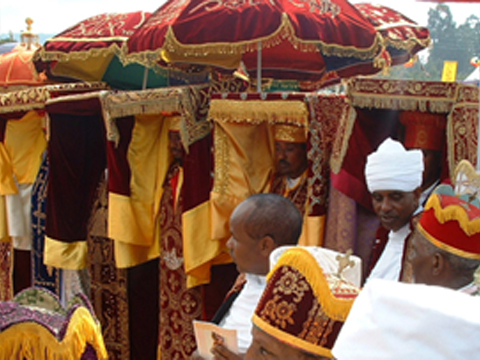
Festivals in Ethiopia
Ethiopia still retains the Julian calendar, in which the year…….
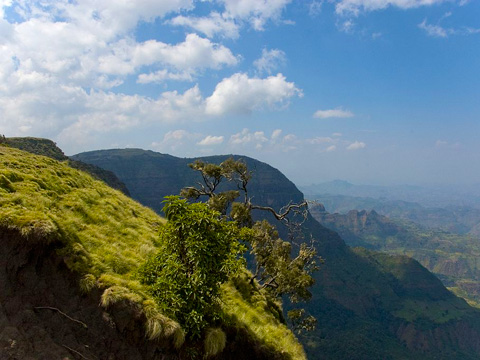
National Parks
Simien Mountains National Park is one of the national parks of Ethiopia…..
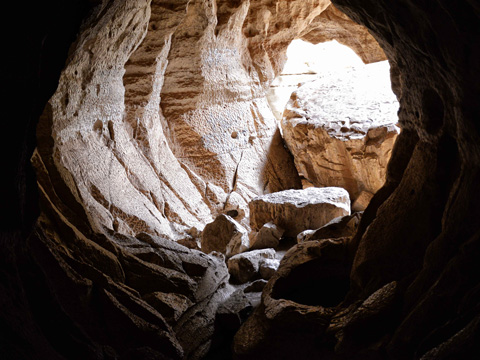
Natural Attractions
The Semien Mountains located in northern Ethiopia…..

Cultural Attractions
The Dorze are a small ethnic group inhabiting the Gamo Gofa Zone …..



